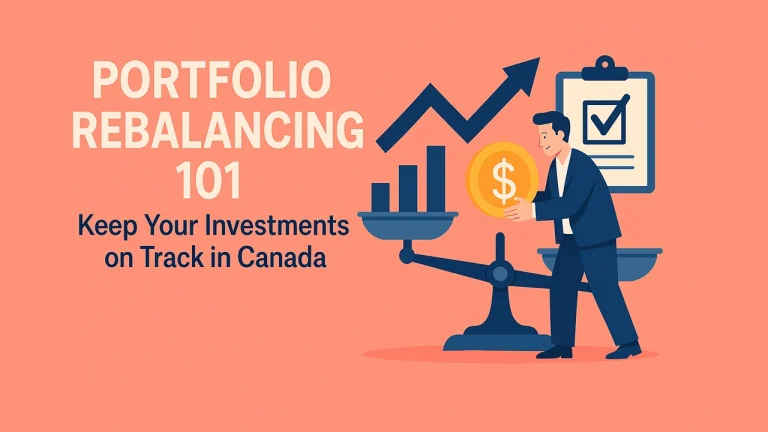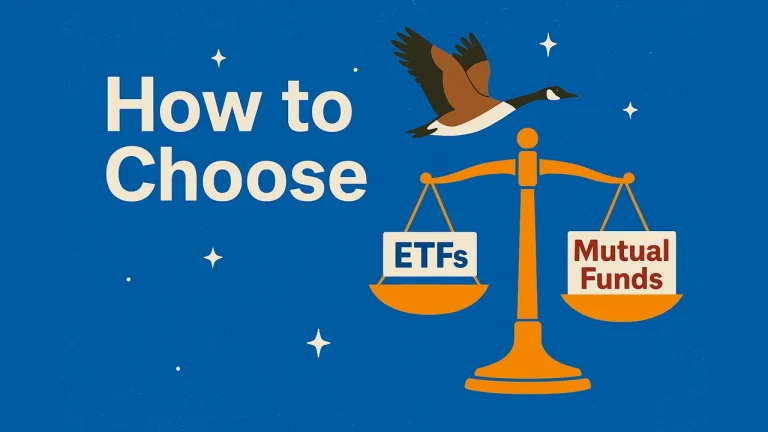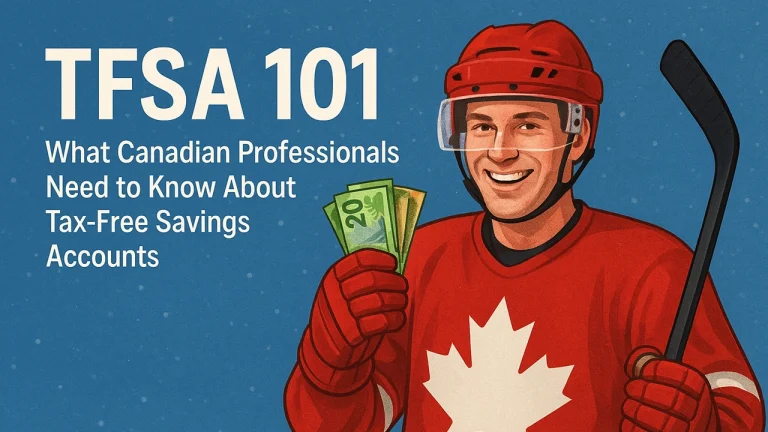Sinking Funds Made Simple: How Busy Canadians Can Plan Big Expenses Without Stress

Big expenses like car repairs or holiday travel always seem to hit at the worst time — and most Canadians just throw them on a credit card.
A sinking fund is a simple way to plan for those non-monthly costs—without overthinking or overbudgeting.
You’ll learn how to set one up in minutes, how it fits into your overall money strategy, and how it’s different from an emergency fund. By the end, you’ll know exactly how to use this tool to avoid money stress, ditch the guilt, and stay financially ready for anything.
Let’s get started.
Quick Summary
- 🧾 Sinking funds help you save gradually for big, expected expenses—without throwing off your monthly budget.
- 🗓️ Set a target amount and timeline for each goal, like holidays, car repairs, or insurance premiums.
- 🔄 Automate savings into separate accounts or buckets to make the process effortless.
- 💡 Stay flexible by adjusting contributions or goals as your needs change.
What is a Sinking Fund (And Why You Should Care)?
A Quick, Simple Definition
A sinking fund is money you set aside little by little for an expense you know is coming — just not every month. Think: annual car insurance, holiday gifts, or vet bills.
Instead of getting caught off guard, you build the fund gradually, so the money is ready when you need it.
💡 Pro Tip
How does a sinking fund fit into the overall theme of personal finance?
📖 Read our beginner guide on personal finance.
How It’s Different from an Emergency Fund
An emergency fund is for unexpected events—like losing your job or a surprise medical bill.
A sinking fund is for expected but irregular expenses—the ones that pop up once or twice a year and shouldn’t count as emergencies (like renewing your car registration or replacing a broken phone).
|
Emergency Fund |
Sinking Fund |
|---|---|
|
Unexpected expenses |
Predictable expenses |
|
For financial crises |
For non-monthly bills or big purchases |
|
Often kept in one lump sum |
Separated by category or goal |
Why It’s Perfect for Busy People Who Hate Surprises
Sinking funds save you from budget panic. No more scrambling or dipping into your emergency savings (or worse—your credit card) when predictable costs show up.
Plus, you can automate contributions and stop thinking about it—perfect for busy Canadians who don’t want another task to manage.
Common Sinking Fund Categories for Canadian Households
Not sure what to start saving for? Here are the most common sinking fund categories that sneak up on Canadians every year—and how to get ahead of them.
Car Repairs, Maintenance & Insurance Deductibles
- Even reliable vehicles need oil changes, tire replacements, or surprise repairs.
- Add your insurance deductible here too—it’s a smart move in case you ever need to make a claim.
💡 Pro Tip
If your car is out of warranty, plan for at least $50-$100 per month.
Travel, Gifts, and Holidays
- Family trips, birthdays, and holiday shopping don’t happen every month—but they’re never cheap.
- A sinking fund lets you enjoy these moments without stressing about your credit card balance in January.
- Estimate the annual cost, divide by 12, and automate the savings.
Property Taxes, School Fees, and Other Annual Bills
- Many Canadians forget about annual or semi-annual expenses like property tax, school activity fees, or membership renewals.
- Instead of scrambling, set aside a monthly amount so it’s ready when due.
- Bonus: No surprises = no budget derailing.
Tech Replacements and Subscriptions
- Your phone, laptop, or tablet will eventually need an upgrade.
- Subscriptions like Amazon Prime, Spotify, or Costco renew yearly and often catch people off guard.
- Planning ahead means these renewals feel like just another line item—not a budget buster.
Pet Costs
- Vet visits, vaccines, or emergency pet care can add up quickly.
- Even if you don’t have a pet now, this is a must for pet parents—or anyone planning to adopt.
- Consider budgeting at least $20–$40/month per pet, depending on breed and age.
💡 Pro Tip
You don’t need all of these right away — start with 1–3 categories that matter most to your lifestyle.
How to Set Up a Sinking Fund (Fast and Easy)
You don’t need spreadsheets, apps, or hours of free time. Just follow these 3 quick steps:
Step 1: Choose Your Categories (Start with 1–3 Max)
Pick 1–3 upcoming expenses that you know are coming within the next 12 months, for example:
- Car maintenance
- Holiday gifts
- A new laptop
💡 Pro Tip
The fewer categories you start with, the easier it is to build the habit.
Step 2: Calculate Monthly Contributions (Use the 12-Month Rule)
Figure out the total cost of the expense and divide by the number of months until you’ll need the money.
Example:
Planning to spend $1,200 on Christmas? You’d save $100/month starting in January — or $240/month if you’re starting in August.
💡 Pro Tip
Use round numbers to keep it simple and easy to remember.
Step 3: Automate It Through Your Banking App or Budget Tool
Log into your bank or budgeting app and set up an automatic monthly transfer to a separate account or “bucket” for each goal. This way you don’t have to think about it, and don’t get tempted to spend the money on something else.
Many Canadian banks now let you create multiple savings goals under one account (e.g. EQ Bank, Tangerine, Simplii). Use those labels.
That’s it — your sinking fund is up and running.
Next, let’s cover where to store your money so it actually grows (a little) while you wait.
Best Ways to Store Your Sinking Fund
You want your sinking fund to be easy to access, separate from your daily spending, and ideally earning a bit of interest.
Here’s where to keep it:
High-Interest Savings Accounts (HISAs) in Canada
This is the gold standard. HISAs keep your money safe, accessible, and earning a small return — perfect for short-term goals.
Popular Canadian options:
- EQ Bank – Great rates and easy goal-setting features
- Tangerine – Lets you create named “savings buckets” under one account
- Simplii – No-fee, online-friendly, and often runs new user promos
💡 Pro Tip
Separate your sinking fund from your regular chequing account to avoid “accidental” spending.
Digital Envelopes or Budgeting Apps
Apps like You Need a Budget (YNAB) or Koho let you assign money into categories (aka “envelopes”) without needing multiple accounts.
This is ideal if you’re already using a budgeting system and want everything in one place.
What about TFSA (Spoiler: Better Not)?
While a TFSA (Tax-Free Savings Account) is great for investing, it’s not ideal for sinking funds unless:
- You’re using a HISA TFSA, and
- You’re sure you won’t make frequent withdrawals
Frequent deposits and withdrawals could eat into your contribution room and lead to penalties if you’re not careful.
💡 Pro Tip
Stick to regular savings accounts for short-term sinking funds.
How to Actually Use Your Sinking Fund Without Guilt
You’ve built the fund—now what? Here’s how to actually use it without second-guessing yourself.
When to Use It and How to Track It
Use your sinking fund only for the expense it was meant for. If you’ve been saving for holiday gifts or new tires, then spending the money is the plan — not a setback.
You can track it with:
- Budgeting apps like You Need a Budget (YNAB) or Koho
- A simple spreadsheet or notebook
- Built-in labels in your high-interest savings account
💡 Pro Tip
How are a sinking fund and budgeting connected?
📖 Read our beginner guide on budgeting.
Avoiding the “I’ll Just Use a Credit Card” Trap
It’s tempting to charge the expense and “save later”—but that defeats the whole purpose.
If the sinking fund is ready, pay in full and skip the interest. You’ll feel way better swiping a debit card knowing the money is already set aside.
Tips for Staying Consistent (Even if You’re Super Busy)
- Automate everything. Set it and forget it.
- Review once a quarter. Take 5–10 minutes every 3 months to adjust amounts if needed.
- Celebrate your wins. Did you pay for a big expense with zero stress? That’s worth a fist bump.
Conclusion
Planning ahead with sinking funds gives busy Canadians peace of mind—and keeps large expenses from sneaking up on you.
- 🔍 Sinking funds turn big, expected costs (like car service or vacations) into small, manageable monthly savings.
- 🗓️ Define your goals by naming the expense, setting a target amount, and choosing a timeline.
- 💳 Automate contributions into separate accounts or buckets to stay consistent and hands-off.
- 🧠 Track and adjust as needed—reallocate funds or update goals when life changes.
By setting things once and forgetting them, sinking funds protect your budget, prevent debt, and let you pay for life’s big moments without stress.






